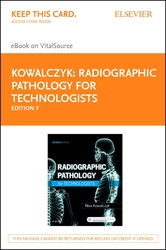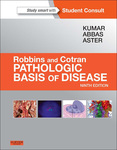「重要なお知らせ:日本語書籍をご購入いただき、eLibraryをご利用の皆さまへ」
エルゼビアは、より快適にサービスをご利用いただくため、システムの重要なアップデートを実施いたします。
現在、新サイト、eBooks+への移行が進められています。
新規ユーザー登録および書籍の登録はElsevier eLibraryでは停止しております。
12月15日以降に
こちらよりご利用・ご登録ください。
Book Description
Using an essentials approach, Radiographic Pathology for Technologists, 7th Edition concisely covers the injuries and abnormalities most frequently encountered in practice. This new edition has been updated to reflect the latest ACR appropriateness criteria and ASRT curriculum guidelines. It also features background discussions of key anatomy and physiology principles, along with imaging considerations for each disease categorized by type followed by a description of its radiographic appearance, signs and symptoms, and treatment.
- Essential level of coverage presents approximately 150 injuries and abnormalities most frequently diagnosed using medical imaging.
- Summary tables at the end of each chapter list pathologies covered and the preferred imaging modalities for diagnosis.
- Correlative and differential diagnosis discussions explain the diagnostic process and demonstrate the importance of high quality images.
- Chapter outlines and objectives, key terms, and multiple choice and discussion questions for each chapter with answers provided in the back of the text highlight the most important concepts within each chapter.
- NEW! Updated content reflects the latest ACR Appropriateness criteria and ASRT curriculum guidelines.
- NEW! Current digital radiography practices and images covered throughout text.
- NEW! Radiographic images illustrate gastrointestinal, hepatobiliary, and urinary pathologies
- NEW! Replacement images and illustrations reflect current practice for general radiography and alternative modalities, such as CT, MR, and fusion imaging to help you understand how pathologies are demonstrated.


 (0 rating)
(0 rating) 






